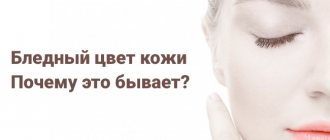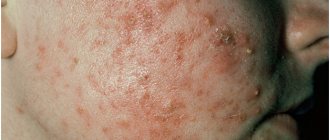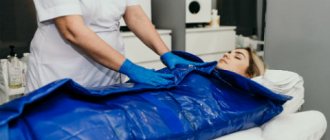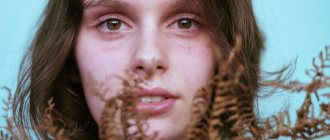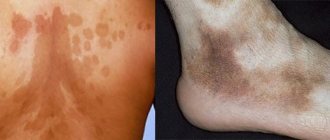Men often experience acne on the penis. Regardless of whether this phenomenon is harmless or is a sign of dangerous pathological processes in the body, in any case, pimples on the penis cause discomfort both due to their unaesthetic appearance and due to physiological inconvenience.
A urologist, andrologist or venereologist can identify the exact cause of formations on the skin after conducting an examination and receiving all the necessary tests and studies.
The following are possible causes of acne:
● Inflammation of the sebaceous glands or folliculitis, dermatitis and other non-infectious diseases;
● Allergies;
● Failure to comply with intimate hygiene rules;
● Ingrown hair. A fairly common cause, especially in people who remove hair from the genitals. At the junction of the skin of the penis and the skin of the pubis, a certain angle is formed, the hair bends, grows into the skin, redness and itching appear.
● Sexually transmitted infections;
● Changes in a man's hormonal levels;
● Fungus (mycosis) on the penis;
● Ticks and pubic lice. Infection with these parasites is not always associated with sexual contact; they can also be acquired in public places such as a sauna, swimming pool, locker room.
Types of rashes
Depending on the cause that caused the appearance of this pathology, the rashes have different sizes, shapes, colors and are accompanied by various symptoms.
White pimples
Most often, men encounter white rashes. In most cases they are safe. White pimples on the penis can appear due to neglect of intimate hygiene, under stress, or due to excessive sweating in hot weather.
Puberty boys often notice white pimples on the shaft and under the head of the penis. These formations are called Fordyce granules, are the absolute norm and go away on their own over time.
When using certain hygiene products, lubricants or contraceptives, an allergic reaction is possible, which is also accompanied by a frequent white rash and itching.
Red pimples
The appearance of a sick red pimple on the penis may be associated with banal irritation. You should not try to remove it yourself, as squeezing it out will create an open wound, where infection can easily get in and cause even greater complications.
However, if, in addition to red pimples, there is burning, itching and swelling, it can be assumed that this manifestation is caused by the presence of a sexually transmitted infection or fungal infection.
● Human papillomavirus (HPV). With this disease, the formation may outwardly look like a pimple, but in fact it is a small red or flesh-colored wart, which is a consequence of infection with the human papillomavirus.
● Gonorrhea. This disease is accompanied not only by changes in the skin of the penis, but also by the presence of discharge with an unpleasant odor and painful urination.
● Syphilis. The appearance of small and very painful ulcers on the genitals, low-grade fever and general malaise may indicate infection with syphilis.
● Thrush (candidiasis). A small scattering of red pimples on the head of the penis occurs with candidiasis. Men also note the presence of white, cheesy discharge.
Purulent acne
Acne can occur not only on the face or back, but also on the genitals. This is due to blockage of the pores, due to which the natural sebum produced by the sebaceous glands cannot be released onto the surface of the epidermis, the pores become inflamed and suppurate, and a purulent pimple forms on the penis.
A purulent red rash can be caused by balanitis. This disease is provoked by sexually transmitted infections, aggressive effects of components of hygiene products, dermatological diseases, including skin cancer.
Watery rashes
A large number of small pimples with colorless or yellowish contents indicate the presence of the herpes virus. These formations do not cause pain, but after some time they burst, the fluid comes out and small open sores remain in their place. These wounds cause severe discomfort, pain and itching.
Also, in this way, an allergic reaction to contraceptives and lubricants appears on the skin of the penis. This condition does not require special treatment; it is enough to remove the allergen and the symptom will go away on its own.
A white blister can also appear when wearing uncomfortable, chafing underwear or when the skin is injured by a trouser zipper.
Single pimple
One pimple may appear due to inflammation of the hair follicle at the site of an ingrown hair or as a result of trauma to the skin during depilation. Also, in adolescence, single pimples often appear. With sufficient hygiene, after 1-2 weeks this formation goes away on its own, without special treatment.
How to treat subcutaneous acne?
Before removing a subcutaneous pimple using a Uno spoon or other instrument, you should think carefully about whether you can do this without aggravating the situation. Inept squeezing out of rashes often leads to the spread of the inflammatory process, skin damage, scar formation, and hyperpigmentation spots. This way you will get rid of acne, but your skin will not become more beautiful, just one aesthetic defect will be replaced by another.
It is important to learn to treat acne as a disease that needs to be treated, and not just get rid of the symptoms.
Clindovit® gel is a medicine for subcutaneous acne. It is a topical antibiotic that can be used to treat mild to moderate acne.6
It is better to learn from a specialist about how to get rid of subcutaneous acne. He will find out what caused the acne, prescribe medications, home care, and may also recommend cosmetic procedures that will help improve the condition of the skin.
An integrated approach to combating subcutaneous rashes is the most correct. But it should be remembered that even those procedures that are intended to treat acne may be contraindicated for acne if we are talking about inflammatory elements (papules, pustules, cysts).
Pimples on the penis in a child
This alarming symptom in a child may indicate simple heat rash. During the hot season, due to increased sweating, children's delicate skin becomes irritated, causing small pimples to appear.
A more dangerous cause is intestinal mycosis. This manifestation is also characteristic of a very contagious disease - frequency. Only a doctor can identify the specific cause, so first of all the child must be shown to a specialist.
Why did pustules appear on the face?
Pimples with purulent contents form against the background of a decrease in the protective function of the epidermal barrier.56
Internal causes that can cause the appearance of pimples* and pustules on the face are56:
- temperature irritants;
- skin contamination;
- dryness of the epidermis;
- exposure to aggressive chemicals, etc.
Endogenous causes include56:
- overwork;
- poor nutrition;
- diseases of the digestive system;
- chronic intoxication;
- reduced immunity;
- endocrine disorders.
Weakening of the antibacterial protection of the skin may be associated with autoimmune diseases and diabetes.
Preventing rashes
In order to protect yourself from the occurrence of rashes on the penis, you should adhere to a number of rules:
● it is very important to observe the rules of personal hygiene, take a shower periodically, use exclusively personal hygiene items, and change your underwear frequently;
● avoid diaper rash and sweat accumulation in the groin;
● select suitable underwear;
● use special moisturizing creams, avoid dryness of the groin area;
● when visiting public saunas, baths, swimming pools, gyms, try to minimize contact with common objects and go only to places where a sufficient level of sanitation is maintained;
● exclude promiscuity and use barrier contraception;
● lead a healthy lifestyle, eliminate bad habits, eat a balanced diet;
● regularly undergo preventive examinations for diseases and infections.
In what cases is Clindovit® prescribed?
Clindovit® gel is an anti-acne drug containing clindamycin phosphate, which upon contact with the skin is hydrolyzed to clindamycin6. This antibiotic lincosamide exhibits antimicrobial activity against a large number of strains of propionibacteria. Clindovit® also helps reduce the level of free fatty acids on the skin6.
The base also includes auxiliary components:
- Allantoin. Helps the skin regenerate, has an anti-inflammatory effect4.
- Emollient. Helps soften and moisturize the skin5.
Clindovit® is recommended for use in combination therapy, combining with azelaic acid (for example, Azelik® gel) or benzoyl peroxide28. This improves the effectiveness of treatment and reduces the risk of developing antibiotic resistance28.
Treatment methods
You should not try to treat rashes on the penis on your own. If this is caused by an infection or disease, there is a risk that incorrectly selected medications will give a blurred clinical picture and, subsequently, lead to chronicity of the disease. Therefore, when this pathology is detected, the only correct decision is to contact a specialist.
Before drawing up a treatment plan, the doctor will prescribe the patient to undergo the necessary laboratory tests - blood test, smear, scraping. Based on the results obtained, the doctor will be able to choose an effective treatment method - medication or surgery.
Drug therapy includes:
● taking antibiotics for infectious diseases;
● local use of antifungal ointments and taking appropriate tablets for fungal infections;
● if there is a virus, use antiviral drugs and ointments;
● in case of an allergic reaction, avoid contact with the allergen and take antihistamines;
● disruption of the sebaceous glands can be corrected with special ointments.
It is often recommended to abstain from sexual intercourse during the treatment period. If itching and burning are present, taking a warm bath twice a day will help relieve symptoms. When swimming, you should use antibacterial hygiene products.
If it is not possible to solve the problem conservatively, surgical methods are used. Most often this concerns genital warts. In this case, surgical resection is supplemented by taking immunomodulatory drugs.
Causes and risk factors of acne
Acne develops around the hair follicles and is caused by excessive sebum production. Increased secretion of sebum in combination with the presence of dead skin cells on the epidermis leads to clogging of the follicles of the hair shaft, which is accompanied by the appearance of comedones.
Comedones are the same tiny sores with a white tip that turn black when exposed to oxygen. Exacerbation of acne is caused by the involvement of an infectious process. A moist and oily environment is a favorable substrate for the proliferation of acne bacilli (Propionibacterium acnes).
When the bacteria is present, an inflammatory reaction develops, with pimples forming a red plaque on the top of the skin. The final sign of acne is nodular acne, characterized by large inflammatory lesions that can hurt and even leave scars after recovery.
There are several factors that increase the likelihood that a child will develop acne:
- using skin and hair care products that contain chemicals that irritate the skin;
- using alkaline soap and very hot water;
- squeezing pimples and scratching affected areas of the skin;
- frequent stressful situations or constant nervous tension;
- excessive sweating and dandruff.
Learning what causes acne in children can help find ways to prevent and treat the disease. This allows the child to overcome the stress and depression that he experiences due to acne on his skin.
Endocrinopathies can be the cause of childhood acne. That is why, if you have acne, you should definitely consult a doctor to rule out such severe pathologies as congenital adrenal hyperplasia, malignant testicular tumors and polycystic ovary syndrome.
Pustules on the face: what to do?
Since pustules indicate an inflammatory process, most cosmetic procedures are contraindicated for them. What remains is drug treatment and home care. Here are some guidelines to follow:
- Gentle care. If there are an abundance of pustules, it is necessary to take more careful care of the skin so as not to damage them. It is necessary to discard the idea of squeezing out acne elements. This is fraught with the spread of inflammation and aggravation of the clinical picture.
- Exclusion of alcohol-containing products from care. Attempting to dry acne will not be beneficial. The skin will respond with even greater sebum production and hyperkeratinization. And these are already two links in the mechanism of acne formation.
- Nutrition correction. Since the appearance of acne may be associated with the consumption of certain products, for example, dairy. There is evidence that if there is an excess of sugar and fat in the diet, as well as eating on the go, it can provoke an exacerbation of acne.60
- Light makeup. Pustular rashes are very difficult to hide with cosmetics. As a rule, applying a generous amount of foundation creates a mask effect. The face looks unnatural and the skin cannot breathe. As a result, the pores only become more clogged. Makeup for acne is acceptable, but it is better to keep it light. In the evening, it must be carefully removed, for example, with micellar water or milk.
- Refusal of traditional methods of treatment. Do not try to prepare masks or creams yourself. Firstly, the use of multi-component compositions prepared by yourself can provoke irritation, itching, redness, and an allergic reaction. Secondly, you will waste time and may make the problem worse.
You can get rid of pustular rashes only by using medications prescribed by a dermatologist.

